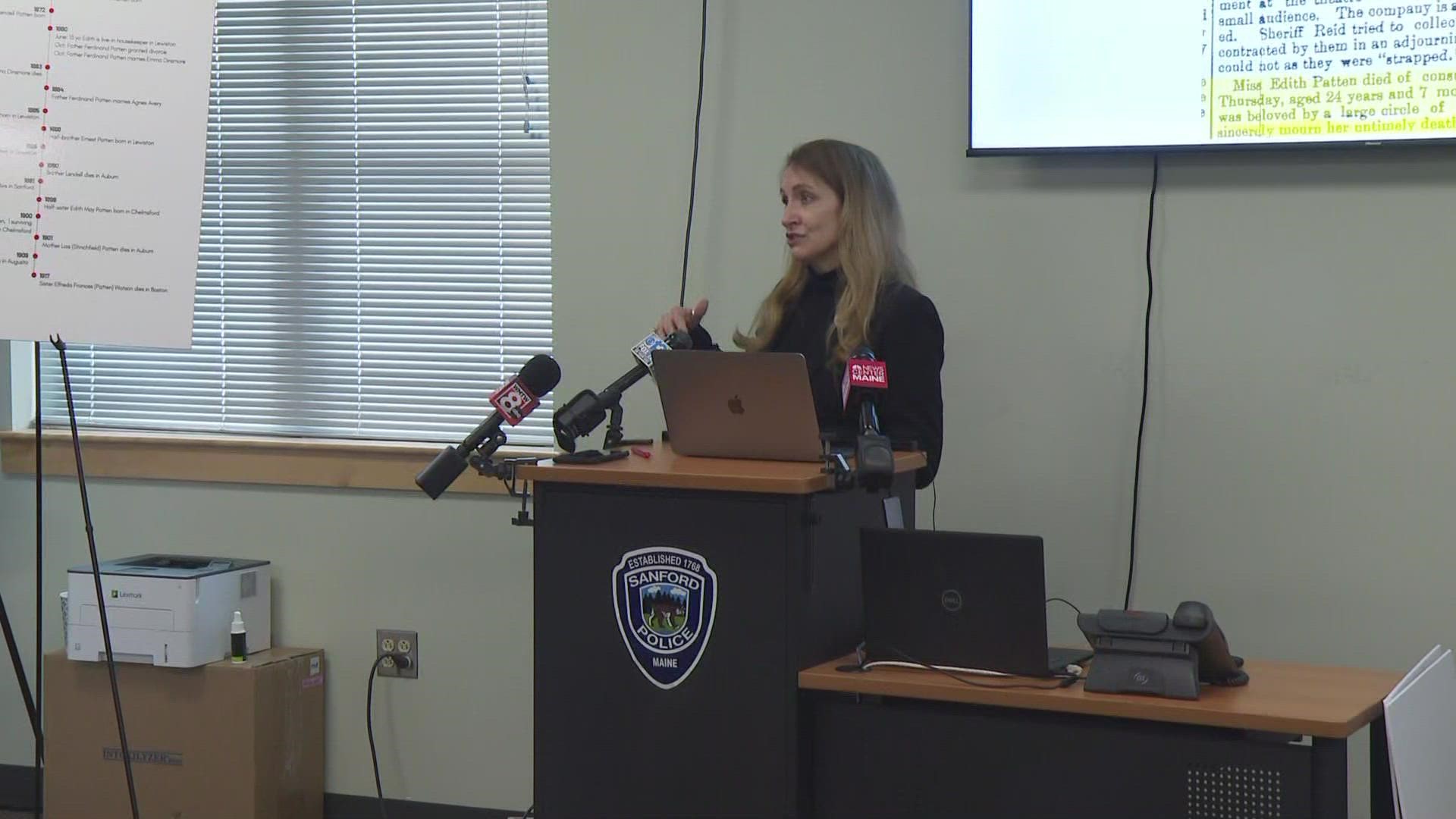SANFORD, Maine — The remains that were found during a construction site excavation in Sanford back in 2017 have finally been identified.
On May 4, nearly six years ago, one construction worker's day took a historical turn when his shovel struck not only dirt, but human remains, too.
The remains were discovered at the construction site in Sanford, workers were aiming to dig a water line on Main Street in order to build a new Cumberland Farms.
The city's history, however, provides insight into why human remains were found at the future home of the Cumberland Farms.
In the past, the site was reportedly the Emerson School's playground, and before that, it was Sanford's first-ever high school.
And even earlier than that, the site was known as the Woodlawn Cemetery until 1906.
Sanford historian Paul Auger told NEWS CENTER Maine in 2017 that according to historical town records, 72 bodies in the Woodlawn Cemetery were moved to Oakdale Cemetery.
But one body was left behind, and it was at the site for over 100 years. That is until the remains were dug up at the construction site in 2017.
Despite the remains appearing to be left behind, Auger said the discovery is also exciting.
"It's very exciting. I'm just really happy that this person isn't going to be forgotten anymore," Auger said in 2017.
Following the discovery, construction was placed on hold until it was determined no other human remains were on the site.
"We want to honor whoever this person is, treat them with respect," Auger said.
The DNA Doe Project aimed to do just that, too.
The nonprofit has been working with researchers since Auger called them in for help in April 2022 to try to identify the remains.
According to the nonprofit's website, the remains are estimated to be that of a 10-year-old girl who likely lived in the late 1800s.
Dubbed the Woodlawn Cemetery Jane Doe 2017, the remains were reportedly found inside a collapsed casket, the nonprofit said.
DNA Doe Project said the remains included finger bones, jawbone, teeth, and ribs, and since the pelvis was missing, researchers could not confirm the gender, but they estimate it is a female.
The nonprofit also said portions of a Victorian-era casket with coffin keys and several nickel-plated handles were discovered with the remains at the Sanford construction site.
"No foul play is suspected—authorities believe the girl’s coffin was simply overlooked," DNA Doe Project said on its website.
In August 2022, historians and researchers said they were getting close to identifying the girl's remains, according to NBC10 Boston.
Flash forward to present day, during a press conference Wednesday held by the Sanford Police Department and DNA Doe Project, the remains were identified at last as Edith Patten.
Through DNA testing technology, the nonprofit discovered Edith lived from 1867 to 1891, shifting her estimated age of 10 years old to 24 years old.
"A DNA profile developed previously by Parabon Nanolabs was optimized with bioinformatics, and investigative genetic genealogists were able to identify Edith Patten by building a family tree from her great-great niece and nephew," DNA Doe Project said in a news release Wednesday afternoon.
The nonprofit said Wednesday that Edith does not have close living relatives whose DNA can be compared directly to confirm her identification.
"Authorities have decided to close the case and re-inter her with the name identified by the DNA Doe Project’s research," the nonprofit said.
“From the beginning, this case touched my heart,” Jennifer Stone Randolph, director of case management with the DNA Doe Project, said in the release. “Paul’s passion for identifying this young woman, and the small city of Sanford’s willingness to fund the lab processes needed to work on the identification made it so compelling. It was an honor to identify Edith."


